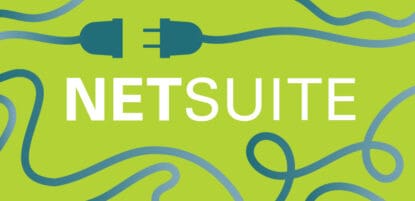Not only does switching to digital B2B payments help businesses remain competitive, streamline AP workflows, and reduce errors and delays, but recent survey data shows that both buyers and vendors increasingly prefer this type of payment.
Keep reading to learn more about why businesses should consider making the switch, the biggest perceived barriers to moving to electronic payments, and the series of benefits associated with digital payments.
Key takeaways
- Digital B2B payments are electronic payments made from one business to another.
- The most common types of digital B2B payments include ACH, credit cards, virtual cards, and wire transfers.
- Digital B2B payments offer businesses access to efficient processing, timely payments, and improved cash flow to help support positive supplier relationships.
What are B2B digital payments?
Digital B2B payments are any electronic payments made from one business to another.This payment type excludes payment via check, which requires physical printing and signing, mailing, and manual processing by the vendor. In recent years, many organizations have shifted to using digital payments because they are faster, safer, and more efficient than checks.
What are the types of digital B2B payment methods?
Digital B2B payments come in many different forms, each with its own pros and cons, depending upon the circumstances. Examples include the following:
ACH
The abbreviation ACH stands for Automated Clearing House. It refers to payments made using an electronic batch payment system in which funds are transferred directly between banking institutions. B2B ACH payments are relatively fast and secure, though it does require vendors to share their banking information (routing and account number) with buyers, which puts additional security risks on the AP team. At the same time, some suppliers don’t like that the payment and remittance are disjointed, as they may receive a remittance email followed by the payment hitting their bank account a few days later.
Credit card
Credit cards allow buyers to make electronic payments with borrowed funds using a card number. These types of payments can be great for keeping bank balances steady until the billing period ends. However, this payment method can be more prone to fraud than other electronic payment methods. Moreover, making credit card payments typically requires more manual effort from the AP team, whether calling in payments or making them online, and then reconciling an additional credit card statement.
Virtual card
This payment method is processed in the same way as a debit or credit card payment, but instead of using a specific card number tied to an account, virtual cards use a randomly generated 16-digit number for each payment that’s authorized only for a single-use and the specified amount. This means B2B virtual cards offer the strongest security of any B2B payment method. Moreover, many virtual cards such as MineralTree’s SilverPay offer rebates and other incentives. Best of all, when they’re an integrated payment option in an AP automation platform, you can use them without the manual or incremental effort required with traditional credit cards.
Wire transfer
As the fastest method of electronic payment, wire transfers immediately move payments from one bank account to another and typically come with high fees. Important to note, these payments are irreversible and can result in problems if there are any errors. That said, wire transfers are often the preferred payment method for international payments or payments that must be processed immediately.
Although every electronic payment method has its respective pros and cons, they each are faster and typically easier to initiate and process than traditional paper checks. This is especially important in today’s remote/hybrid work environment, as it eliminates the need for those processing the payments to be in physical proximity to the office mail and paper checks.
What are the biggest perceived barriers to digital B2B payments?
A curious statistic comes from MineralTree’s recent State of the AP: While both buyers and vendors indicate that they want to make or receive more electronic payments (the numbers who “agree” or “strongly agree” were 70.8% and 82.2% respectively), buyers indicated that supplier willingness to accept ePayment types was the top barrier (56.5%) and vendors indicated that customer willingness to move off checks was the top barrier (62.8%). In other words, both buyers and vendors very much want to move toward more digital payments, but both perceive the other side as impeding the adoption.
This disconnect may be largely explained by the fact that buyers indicated their team’s capacity to contact and enroll vendors as the second greatest barrier to electronic payment growth. Consider that AP departments already tend to have full schedules just handling and processing invoices. It takes additional time and effort to contact each vendor to set up electronic payments and many simply don’t have the resources nor bandwidth to spare toward that effort.
For companies looking to increase their electronic payments, MineralTree can help. Our TotalAP solution includes comprehensive managed payment services, including continuous virtual card and ACH enrollment to help move vendors off checks so you both can unlock the benefits of digital payments.
What are the disadvantages of paper checks?
Paper checks are increasingly falling by the wayside, but not as fast as many would like. In the survey, one-third of respondents still indicated that more than 50% of their payments are via checks, even though 55% are now making fewer check payments than in the past year. And indeed, all electronic payment types are seeing growth. This shift is due in large part to the many disadvantages of paper checks relative to electronic payments.
Disadvantages of paper checks include the following:
Slower payment method:
Checks are much slower than electronic payments. This is because they must be printed, mailed, and manually processed. Moreover, the mail system overall has become slower in recent years and it’s not uncommon for checks to get lost in the mail and have to be reissued.
Costs with paper checks:
There are costs associated with printing, mailing, and depositing paper checks. This is in addition to the increased amount of manual processing involved–which also contributes to greater cost when you consider the wages of the employees involved.
Less secure:
The fraud potential with paper checks is the highest of all payment methods, meaning it is one of the least secure payment options. In contrast, B2B virtual cards typically generate a number that can only be used once, and for a specified payment amount, minimizing the chance of payment information getting into the wrong hands. Even multi-swipe virtual cards can be configured up to a certain amount, limiting fraud risk.
What are the business benefits of moving to Digital B2B payments?
The benefits of moving to digital B2B payments apply to buyers and vendors alike. Among the many benefits are faster payments, increased efficiency, and improved cash flow.
Timely payments
The faster payments can be rendered and processed, the better it is for both the buyer and vendor. On the buyer side, the benefits of digital B2B payments come from reduced costs in printing and mailing checks as well as the manual labor involved. And when payments are processed more quickly, it is also easier to keep track of funds and avoid errors such as duplicate payments. On the vendor side, getting paid sooner means money in hand earlier. Vendors also experience reduced cost and effort when it comes to processing electronic vs check payments.
Processing efficiency
Electronic payments reduce the workload of manual payment methods and make it easier to manage AP effectively. For example, digital payments reduce the manual load needed to track down a check lost in the mail or engage in follow-up related to payment delays. The process of approving and rendering payment electronically can also be incorporated into an end-to-end streamlined workflow if you use the right AP platform. And a platform with a vendor portal can provide added visibility to vendors, which further reduces questions and phone calls to the AP team.
Improved cash flow
Digital payments can lead to improved cash flow both for buyers and vendors. On the buyer side, the faster processing times enable better capture of early payment discounts. If a buyer uses virtual cards, they can also take advantage of rebates. For example, when life science product distributor Quartzy adopted MineralTree, it was able to more than cover the cost of the platform with its SilverPay virtual card rebates alone. Additional cash flow benefits come from the ability to control exactly when payments are rendered in order to optimize working capital.
Improved vendor relationships
On the vendor side, digital B2B payments are much more predictable and reliable, making it into their bank accounts sooner. They also save cost and time by not having to follow up and track down missing payments. Vendors also have more visibility into the process, making it easier to track invoice payment status for their AR team.
Digital B2B electronic payment case studies
Digital payments become a key component of Forge Biologics’ AP process
Forge Biologics is on a mission to enable access to life-changing gene therapies and help bring them from idea to reality. They experienced rapid growth from 30 to 200 employees over an 18 month period, resulting in a strong influx of monthly vendor payments. Their team elected MineralTree as their AP automation platform to help them quickly process these payments. Today, Forge Biologics pays 90 percent of its vendors via electronic means and they are on pace for $80,000 in rebates.
Simple Mills offloads vendor enrollment to MineralTree
Simple Mills is a leading provider of better-for-you crackers, cookies, snack bars, and baking mixes. However, to process nearly 1,000 invoices a month, Cristina Vera, a Senior Accountant, and Maddy McGannon, Simple Mills’ Controller, recognized they needed a better solution.
They paired with MineralTree to automate their AP workflow and now leverage virtual B2B card payments to process invoices. McGannon noted, “What was really great about SilverPay was that the entire process was led by the MineralTree team. They went through our list of suppliers and identified those they knew accepted virtual card payments, contacted each one, and enrolled most of them in SilverPay.”
Digital B2B payments with MineralTree TotalAP
If you’re ready to make the move to more digital B2B payments, consider adopting MineralTree TotalAP. This product not only enables digital payments, including virtual cards but also offers managed services that eliminate the burden of enrolling and managing vendors. With MineralTree, you also eliminate the responsibility of managing vendor banking information because we handle it for you. This means less liability for your AP team.
Furthermore, this AP automation platform enables a single workflow that executes payments across all payment types, helping streamline your AP process. If you’d like to learn more about how MineralTree can help your business get started with digital B2B payments automation, request a demo today.
Digital B2B payment FAQs
What is the best payment method for B2B?
Virtual cards are a great digital payment method for B2B since they provide enhanced security compared to credit cards, help optimize working and spending capital, improve payment accuracy, streamline supplier experience, and more.
What is the most common digital B2B payment?
The most common digital B2B payment methods are paper checks, ACH payments, virtual cards, wire transfers, credit cards, and cash.
What is B2B vs B2C payment?
B2B (Business-to-Business) payments involve transactions between two businesses while B2C (Business-to-Consumer) payments involve transactions between a business and individual consumers. B2B payments typically include paying suppliers for services or goods received while B2C payments are the sale of goods or services directly to consumers.





